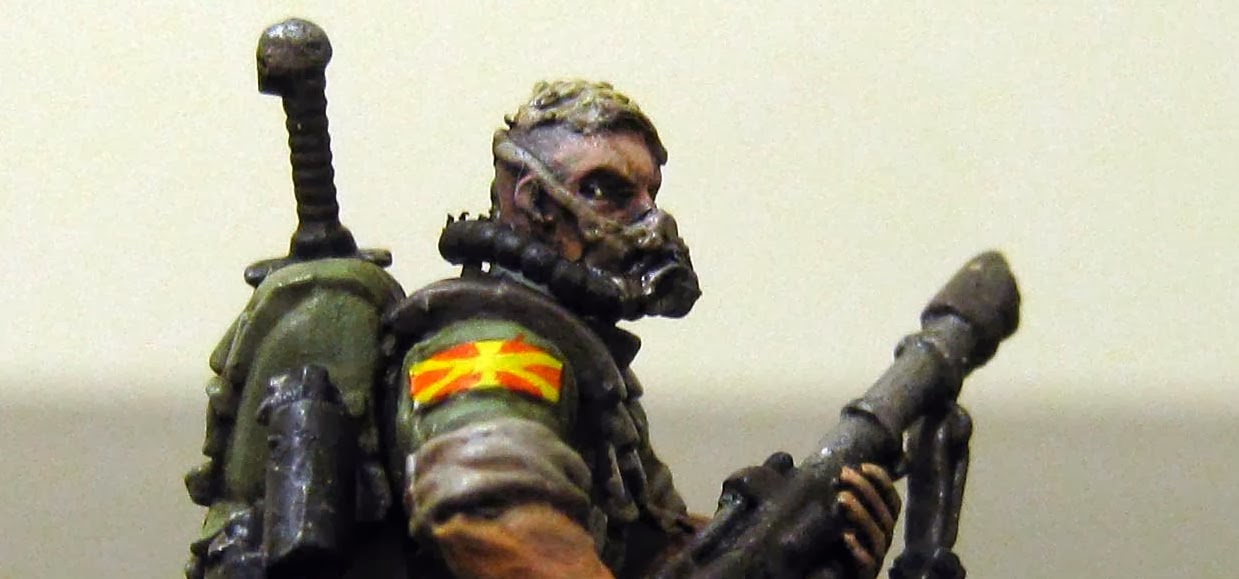+ Blenheim 2nd Expeditionaries +
+ Imperial Guard of Blenheim +
+ The Perseus system is situated on the Grovsenor subsector's border with the Boten Cloud Nebula. The nebula dissuades most attacks from orkspace, but the system has come under attack on a not inconsequential number of times. As a result, while the planets are not always on a war-footing, they all maintain standing and touring armies.+ The Civilised world officially termed Perseus II, and known in-system as Blenheim, is the system's second world. Green and pleasant, the whole of its surface is not only inhabitable but hospitable, with the exception of the extreme poles. Numerous mountain ranges dot the surface, and the planet is split into a number of allied – though nominally independent – states, overseen by the Federation Council of Blenheim. Much of the planet's tithe comes from food exports, including such delicacies as ghostberries, chew-vine and apebread.
+ The planet contributed three large armies it dubbed 'Expeditionary Forces' – each one an organisation of multiple standard regiments – to the M37 Scallop Stars campaign, an amount which is unsurprising once one considers the traditional hostility to raids from orkspace. Recruitment across the planet was met with celebration as the patriotic Imperial servants saw their chance to be involved in the 'great adventure' and take the fight to the orks. All threee armies were folded into the Grovsenor Front forces.
+ Blenheim regiments are mixed; with a roughly two-to-one proportion of males to females serving. Service is compulsory, though the planet is unusual in the number of veterans who eventually make their way home, owing to the Council of Blenheim's political links with the Imperial Navy.
+ Lance-corporal Maximilianus Mustermann is a typical example of the standard trooper the planet contibuted to the campaign. He is pictured here during the first year of the campaign during the landings on Cibernum Alpha, a notoriously tough tour of duty that saw the guardsmen quickly adapt to off-world fighting or perishing.
+ Clutching a Fulzene-pattern lasrifle, an archaic and temperamental type with a wooden stock, marks Mustermann as a later assignation to the 2nd Expeditionaries; as the first were equipped with the superior Yoke-pattern type.

+ Contact with home was an indulgence denied to most regiments, but available to the well-connected Blenheimers until later in the war, when supply lines became attenuated.

+ Imported from the Forgeworld Braun VI, the payloads of the grenades were distinguishable only in infra-vision, owing to a mis-stroke by a Munitorum factotum, which led to a number of regrettable casualties and confusion as troops attempted to provide cover for allies – with explosive results – or destroy ork vehicles and emplacements with harmless smoke bombs.
+ The final image incongruously shows what appears to be a large and valuable Catachan 'knife' strapped to Mustermann's backpack. This is either spoils of war, a treasured relic, or possibly a reproduction bought for intimidatory purposes. The Blenheim troops deployed in the assaults on Cibernum Alpha believed vulgar displays of power provided a benefit against the superstitious orks. Such reports were investigated, but proved largely unfounded.
+ Mustermann's lack of head covering denotes either recklessness or its loss; both punishable by Commissariat reproach – or death.




No comments:
Post a Comment
+ submission exloadform: inload [comments] herein +